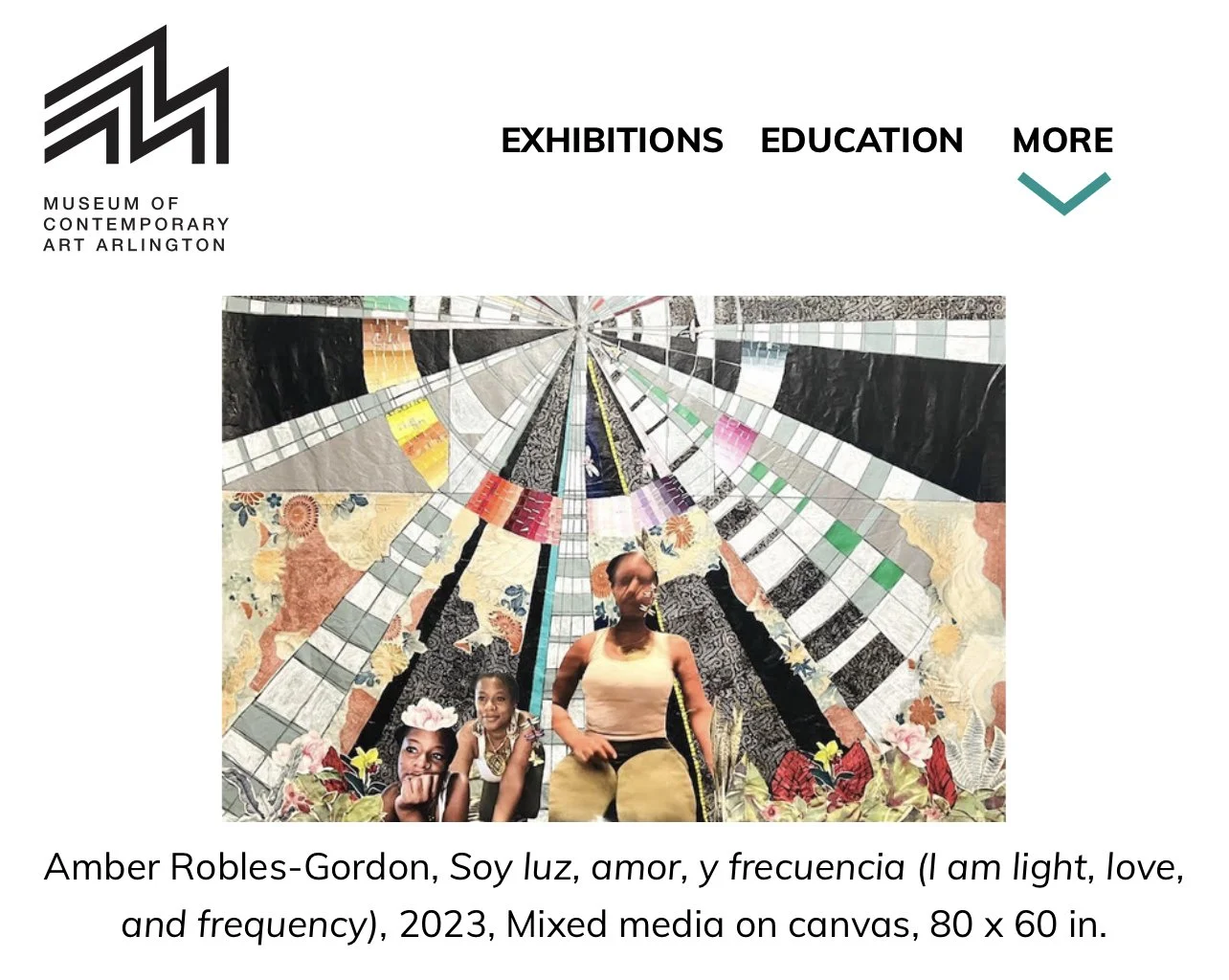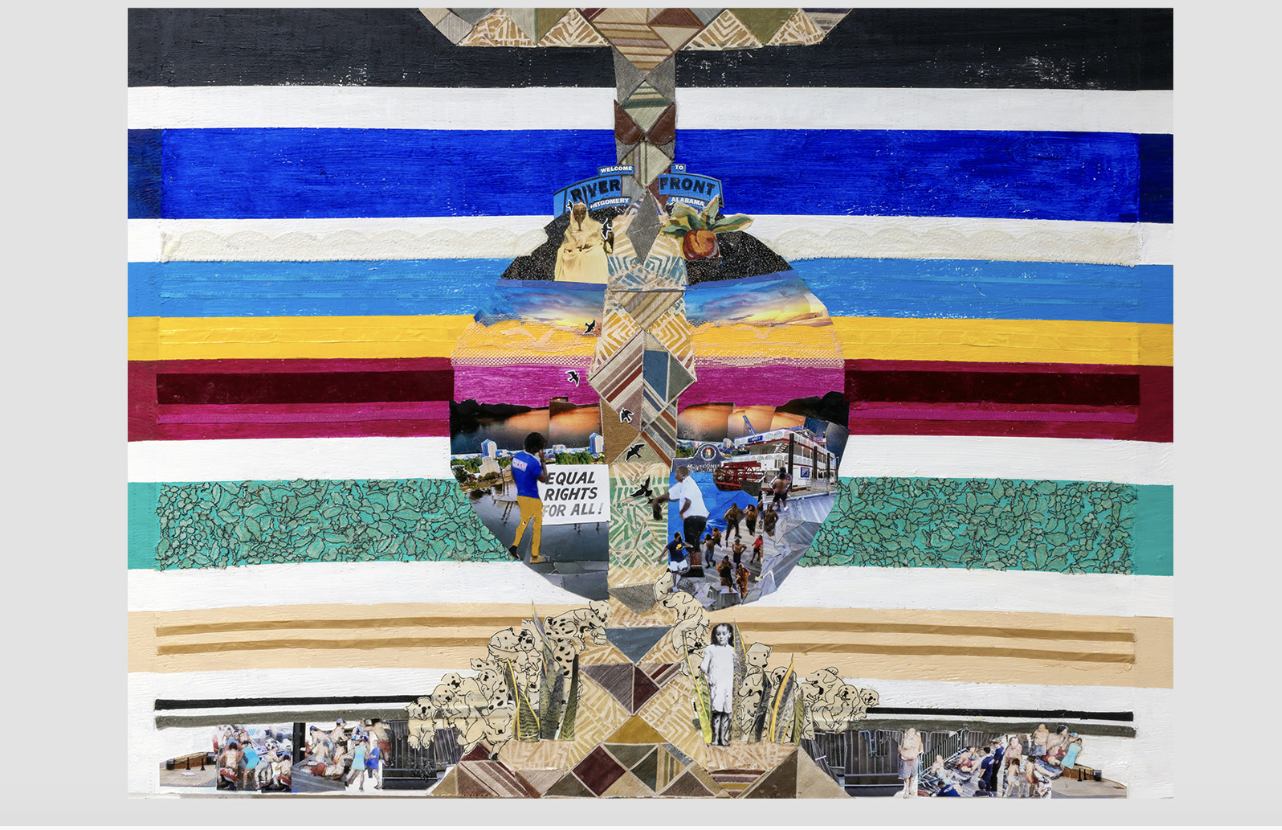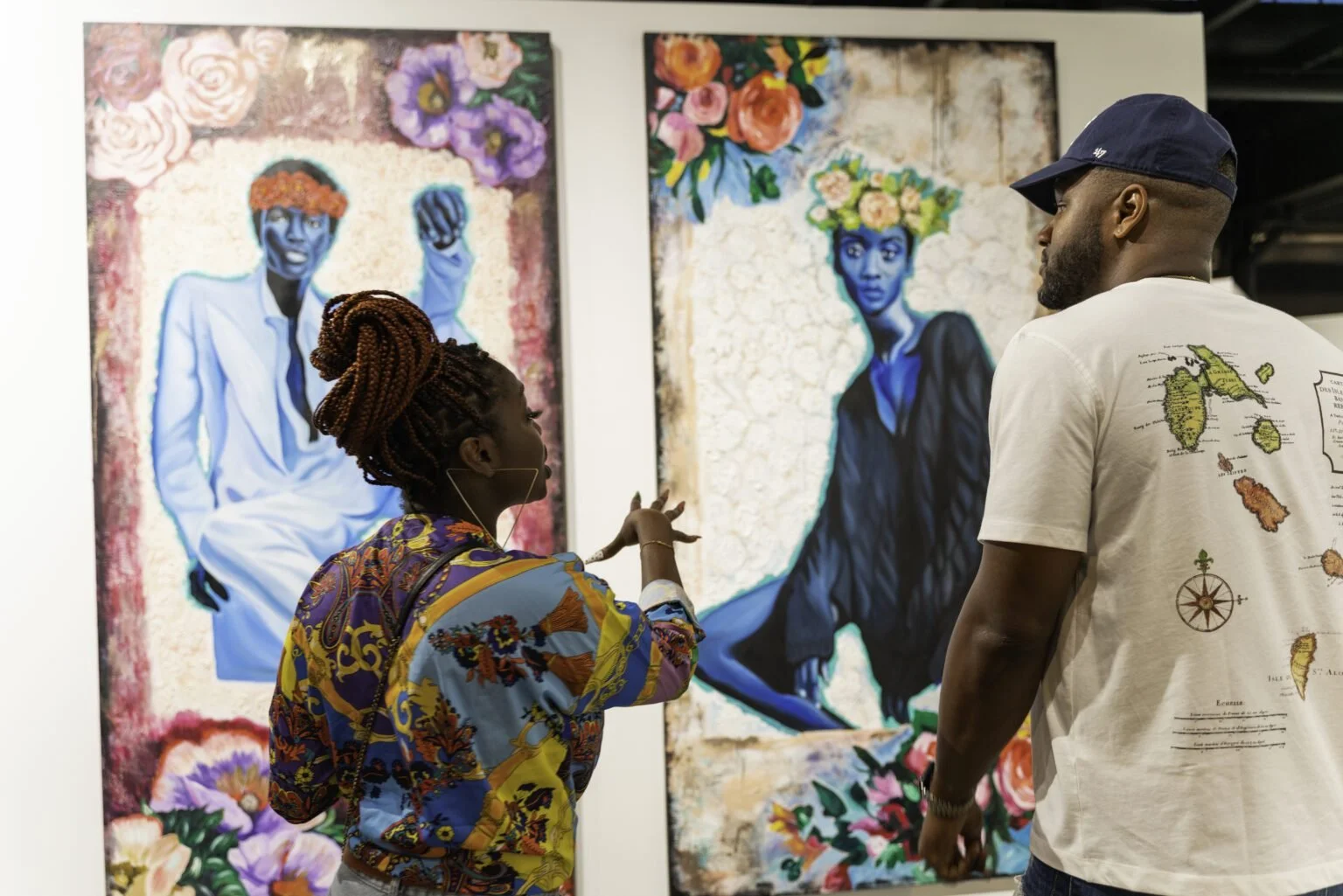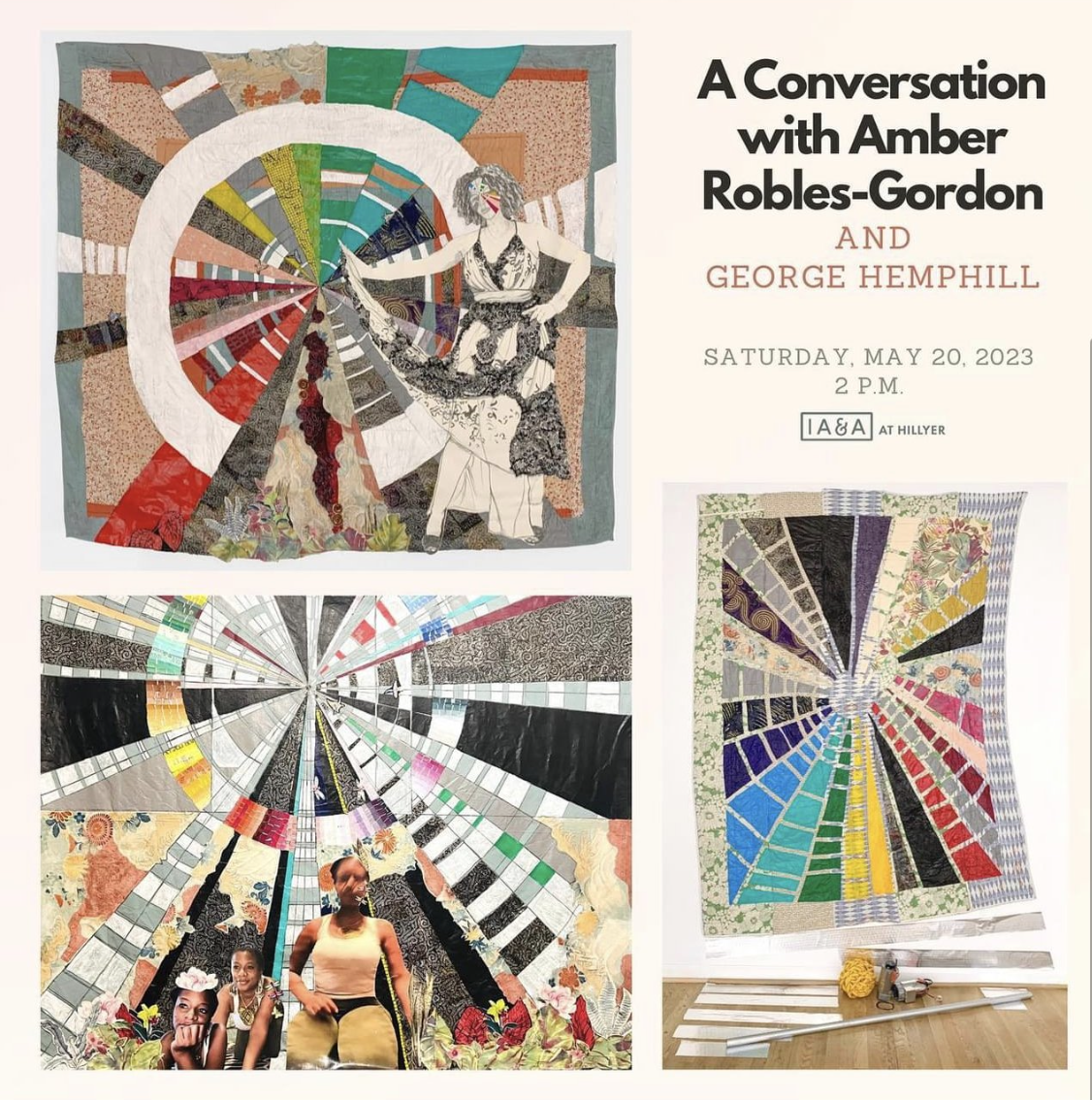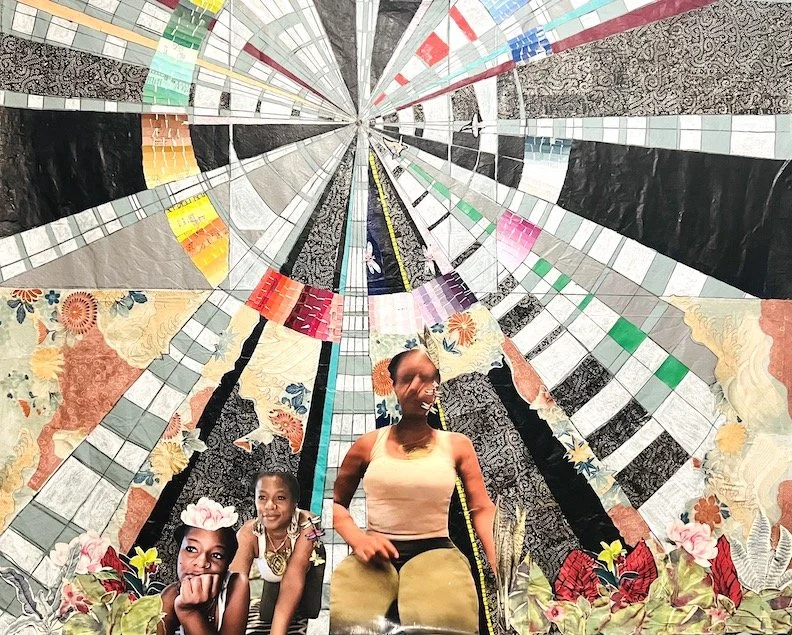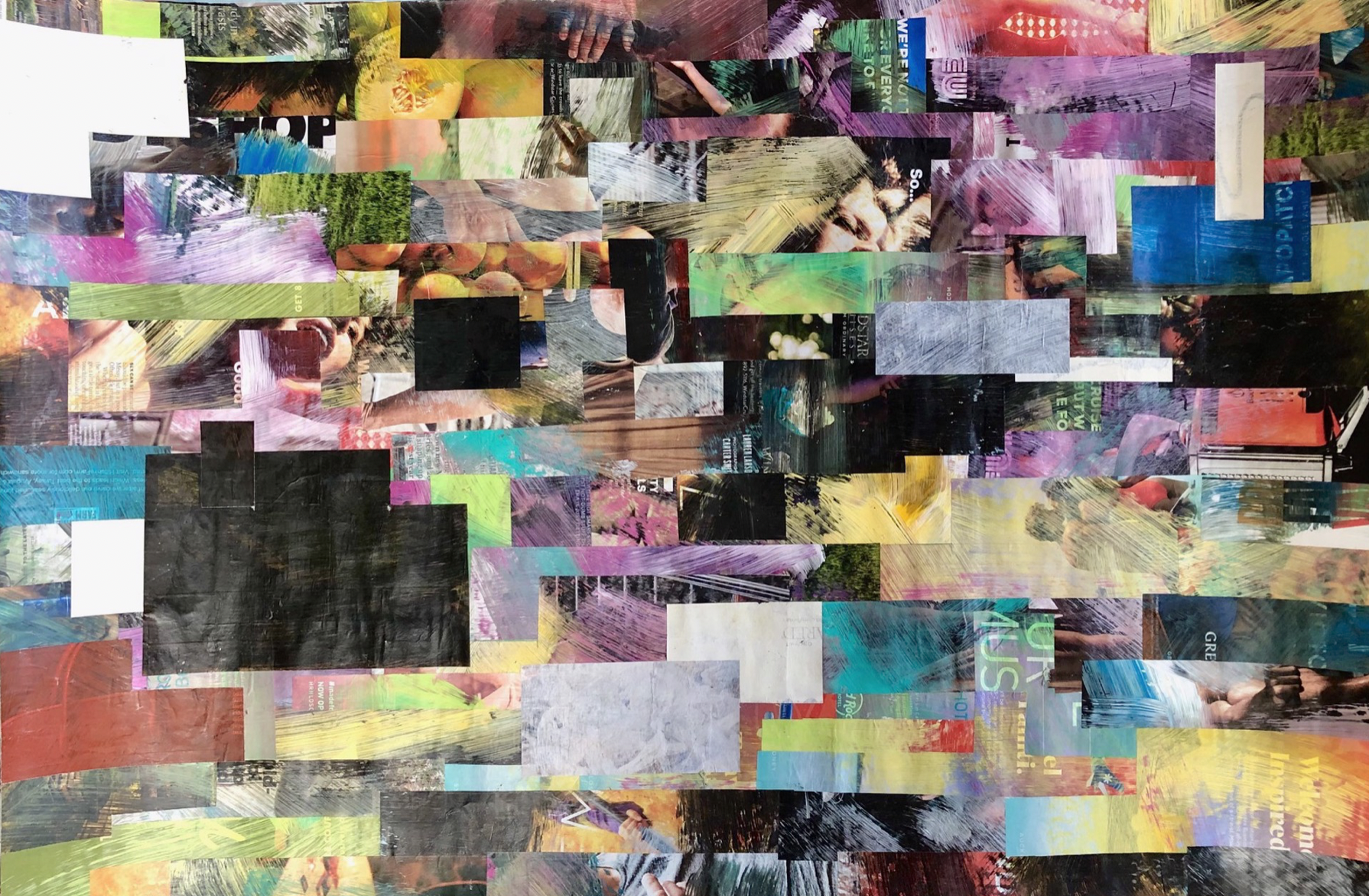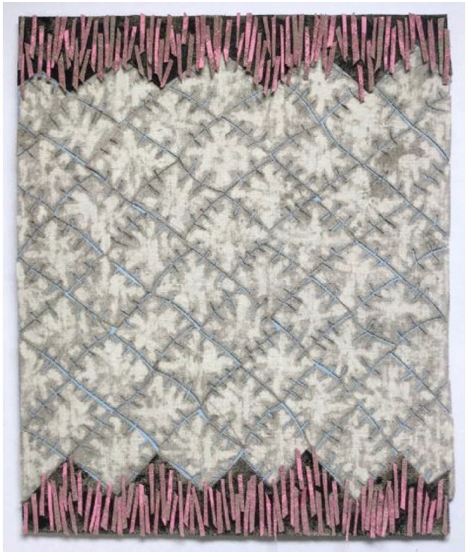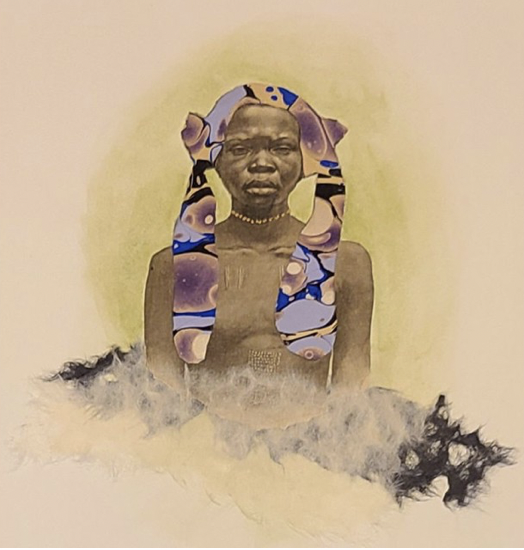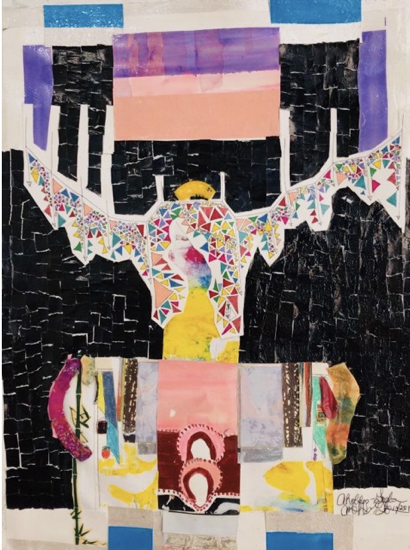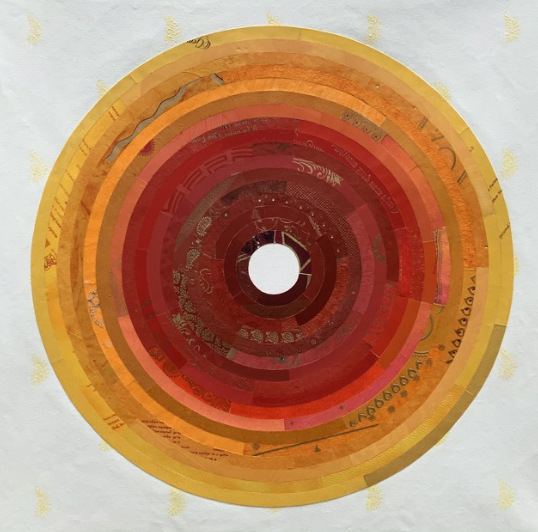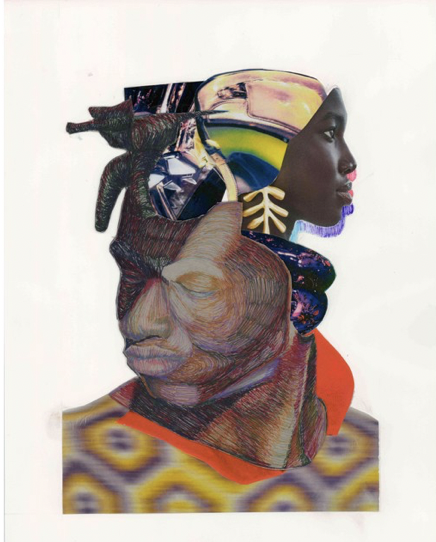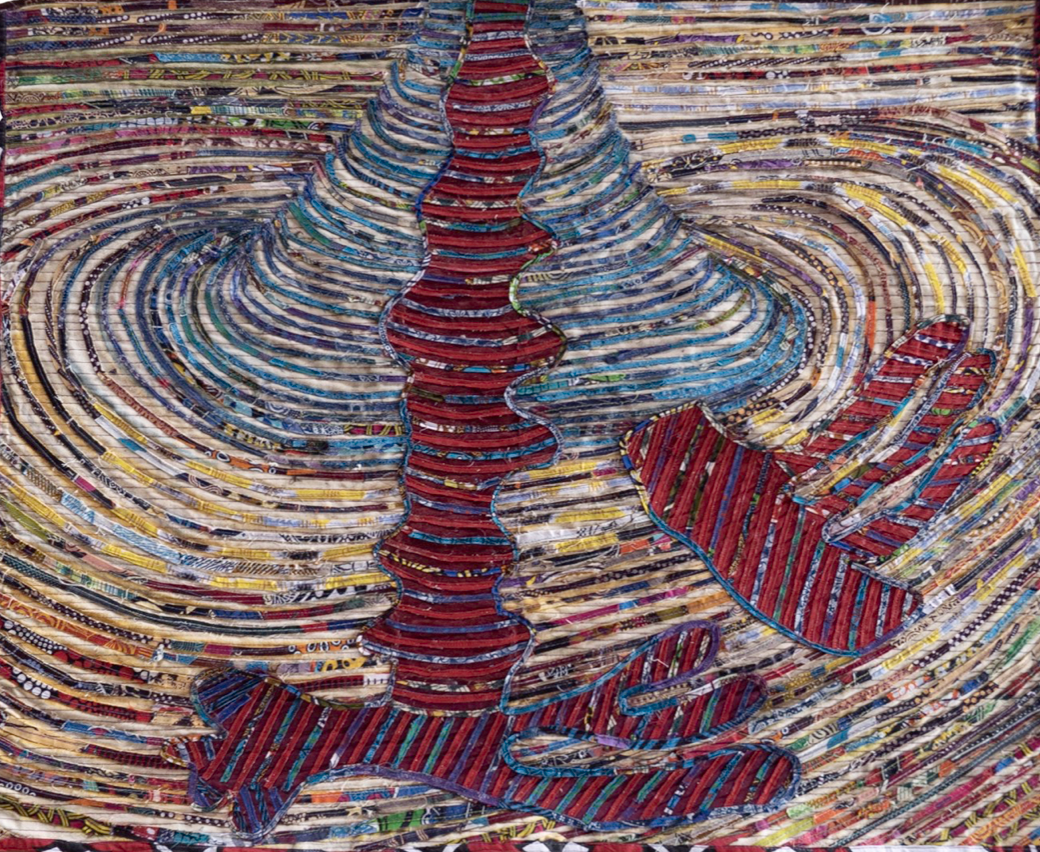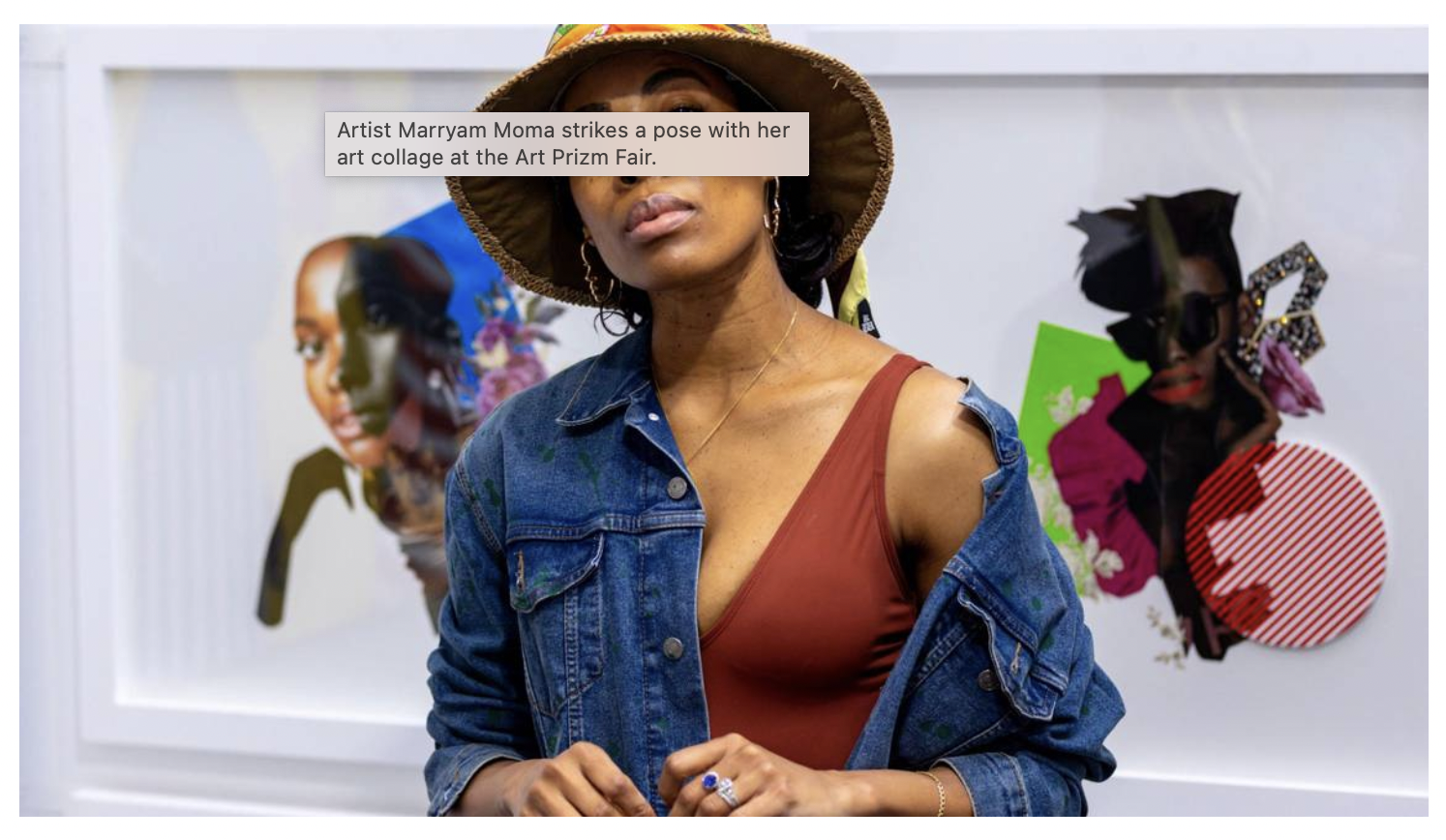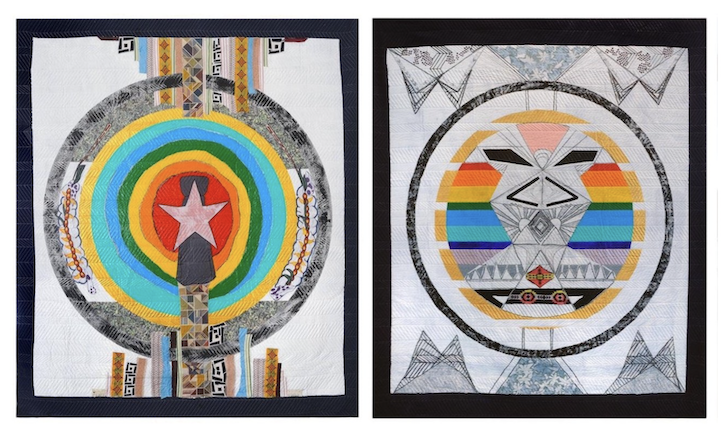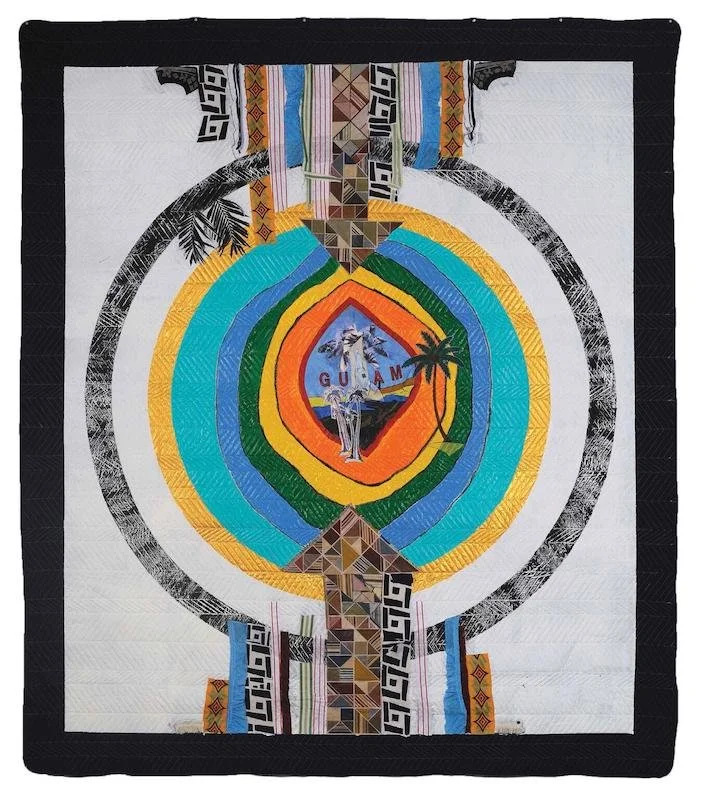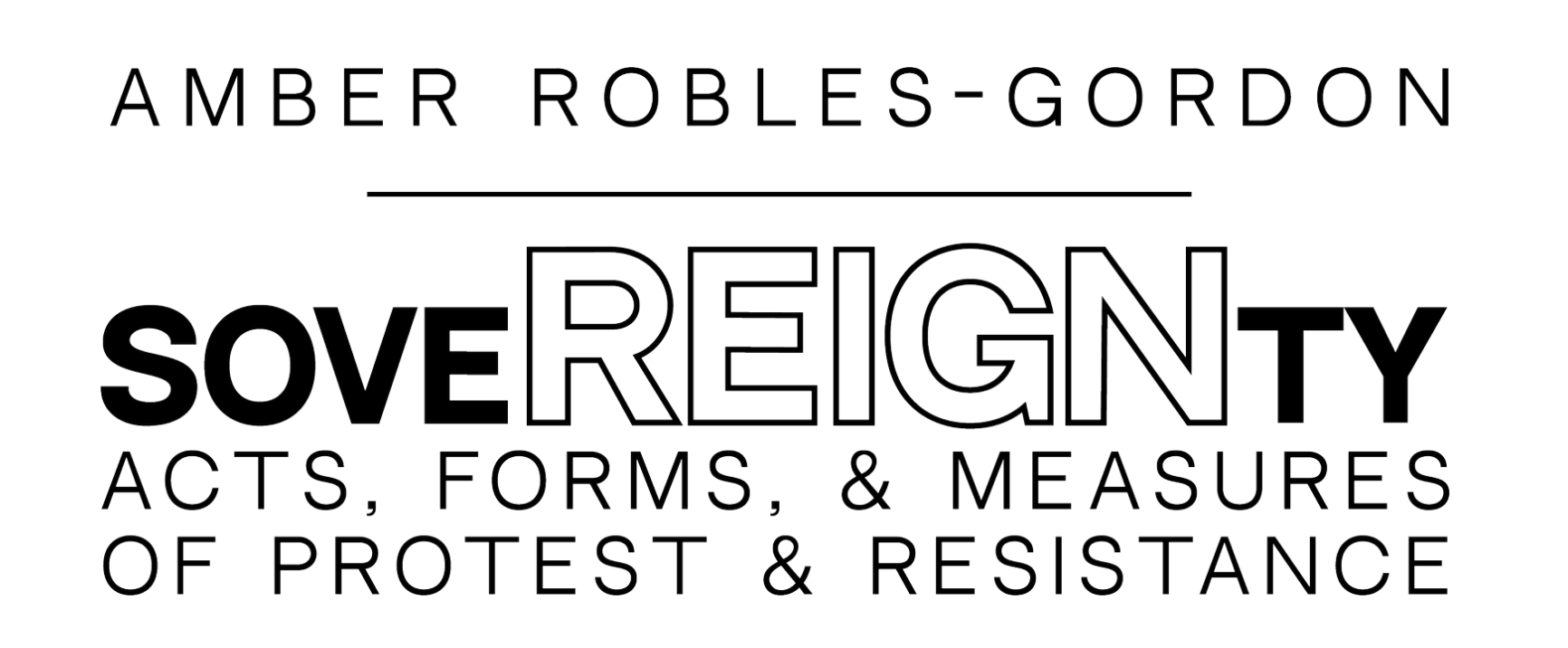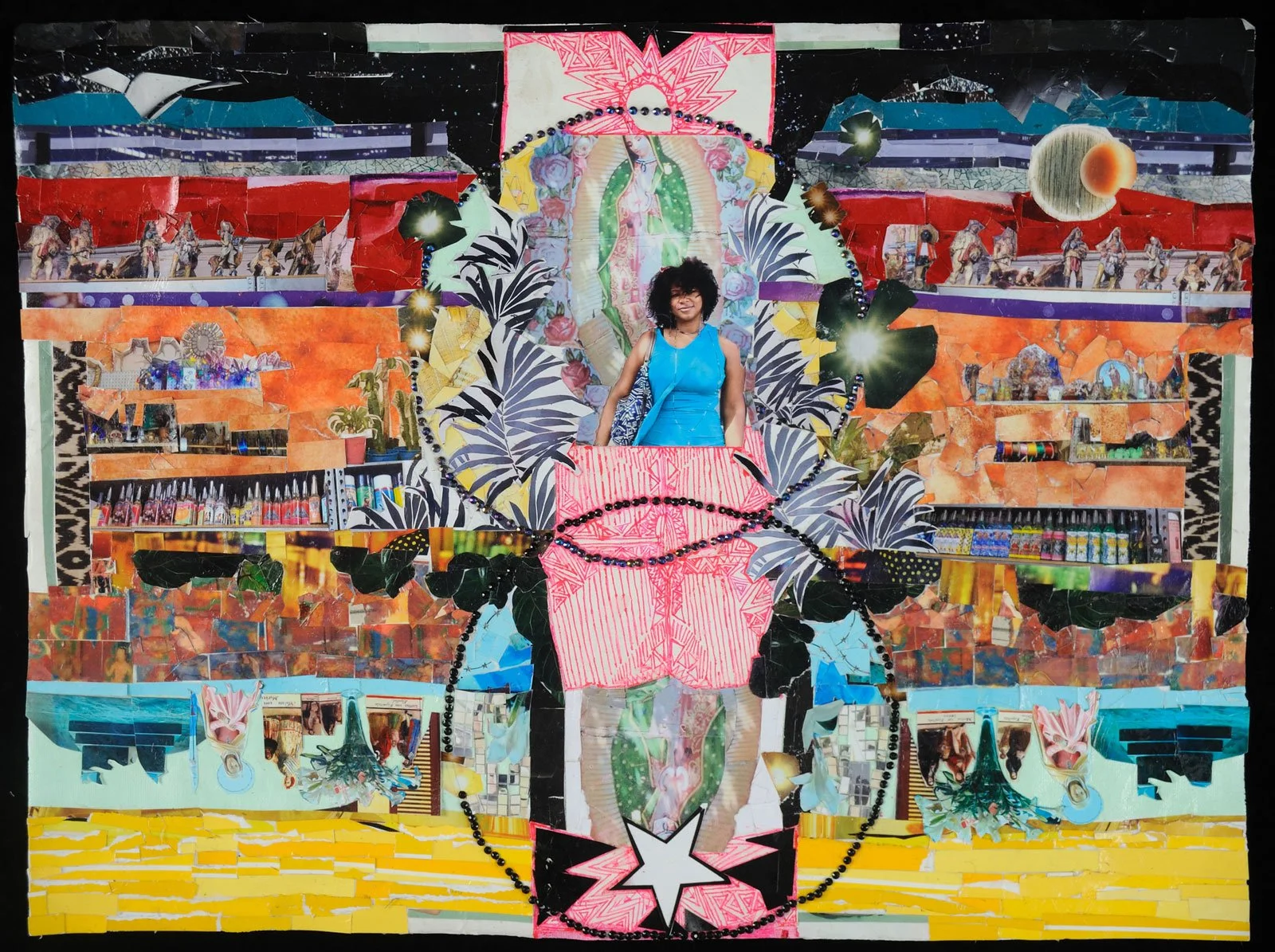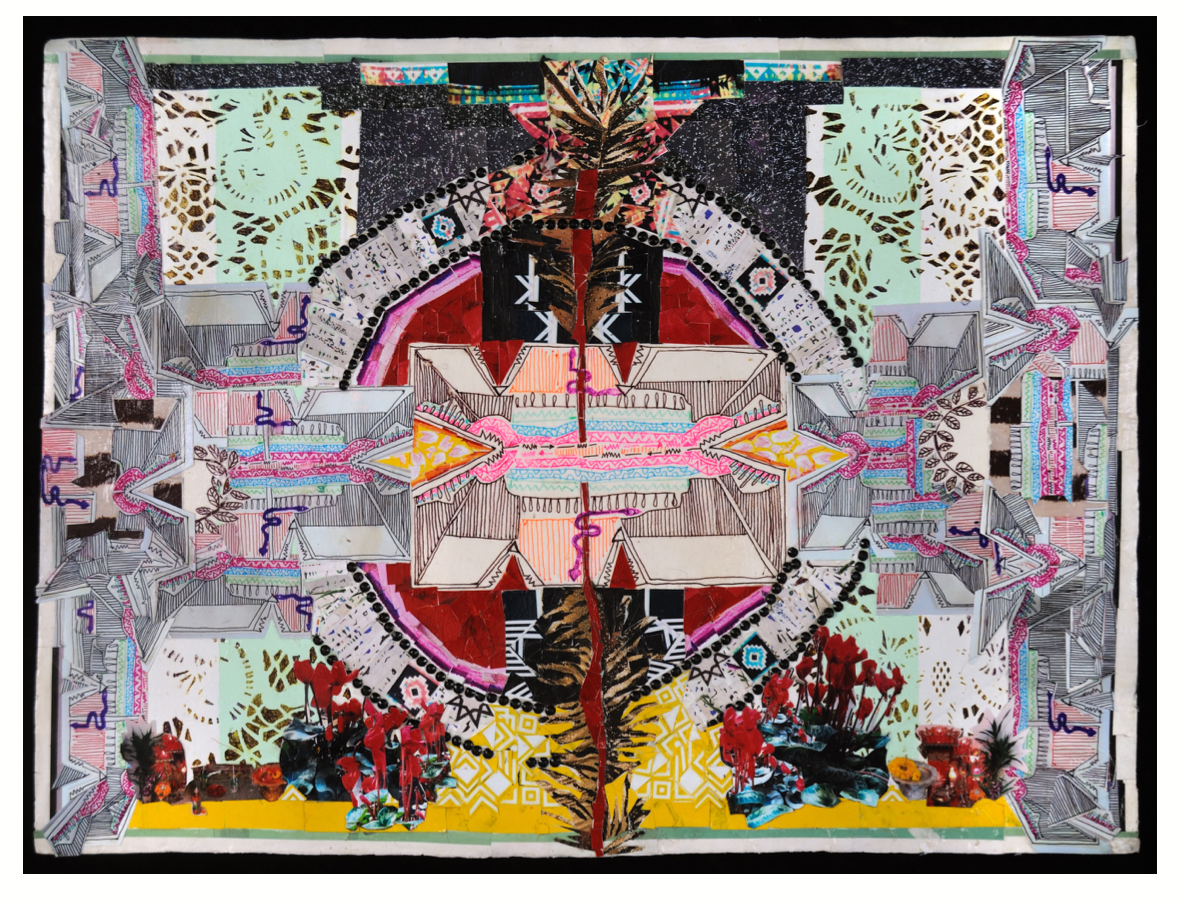Solace and Sisterhood brings together the work of three artists of African descent who are friends and “sisters”: Lavett Ballard, Amber Robles-Gordon, and Evita Tezeno. Through their artwork, viewers are given an intimate look into their experiences and their sisterhood, which has developed over several years. By digging deeply into historical and contemporary perspectives on African American life, exploring traditions in the African diasporic community, or remixing commonly known objects, these artists span media and aesthetics. They tackle topics of self-identity, Black female beauty, and spiritual discovery. They resist single affiliations and simple answers to difficult questions. All the while, they maintain deep bonds that now transcend friendship. They are now sisters.
Read MoreAmber Robles Gordon
Amber Robles-Gordon to give ‘Artist Talk’ at ISU
Robles-Gordon is a multidisciplinary Afro-Latina artist based out of Washington, D.C., who was born in Puerto Rico, grew up in Arlington, Virginia, and has family living in the U.S. Virgin Islands, she said. The six double-sided quilts are meant to convey her perspective of these territories while deconstructing how they are affected by foreign and domestic policies and “stimulate further dialogue regarding the long arm of the American political machine.”
Read MoreDeconstructing Surely, she (he/we) is a little animal? Panel Discussion
Surely, she (he/we) is a little animal? is a chronological visual exploration of the cross generational and long term impact of imperialism and colonialism. In each of the six mixed media on wood panel works Robles-Gordon begins with the transatlantic slave trade and leads the viewer on a panoramic sweep contemplating the modern-day systems and infrastructures that continue to uplift colonialism and imperialism.
Read MoreAmber Robles-Gordon: Surely, she (he/we) is a little animal? - artplugged.co.uk
Who/what is worthy of care? Who cares for the defenseless? Who/what is defended? Incorporating the transdisciplinary study of human ecology into her practice and scope, Robles-Gordon uses the field as an anchor in her expansive investigations of race, history, the sciences and culture. The resulting new body of work rigorously explores colonialism and imperialism, global anti-blackness, child welfare and animal cruelty. Finding them all connected, just not equally, the exhibition exposes frank contradictions in American perceptions of human life, animal life and minority lives.
Read MoreAmber Robles-Gordon continúa con exposición en Washington D.C. - Periódico El Adoquín
Al encontrarlos todos conectados, pero no por igual, Amber Robles-Gordon vincula visualmente las historias y desarrollos de los movimientos estadounidenses de protección infantil y bienestar animal con los derechos civiles y las luchas en curso por la libertad.
Read MoreBUTTER is made possible each year through the combined efforts of GANGGANG, approximately 50 artists and makers, and about 100 creative entrepreneurs in Indianapolis. (Photo/Solo Mabry)
BUTTER artists talk art, equity and cultivating creativity
“We need to go positive towards each other because that’s the only way that we’re going to make real change,” Robles-Gordon said. “We have to deconstruct the lens of white supremacy, the lens of anti-Blackness, and that starts with us looking at each other and treating each other differently.”
Read MoreArte|Diáspora
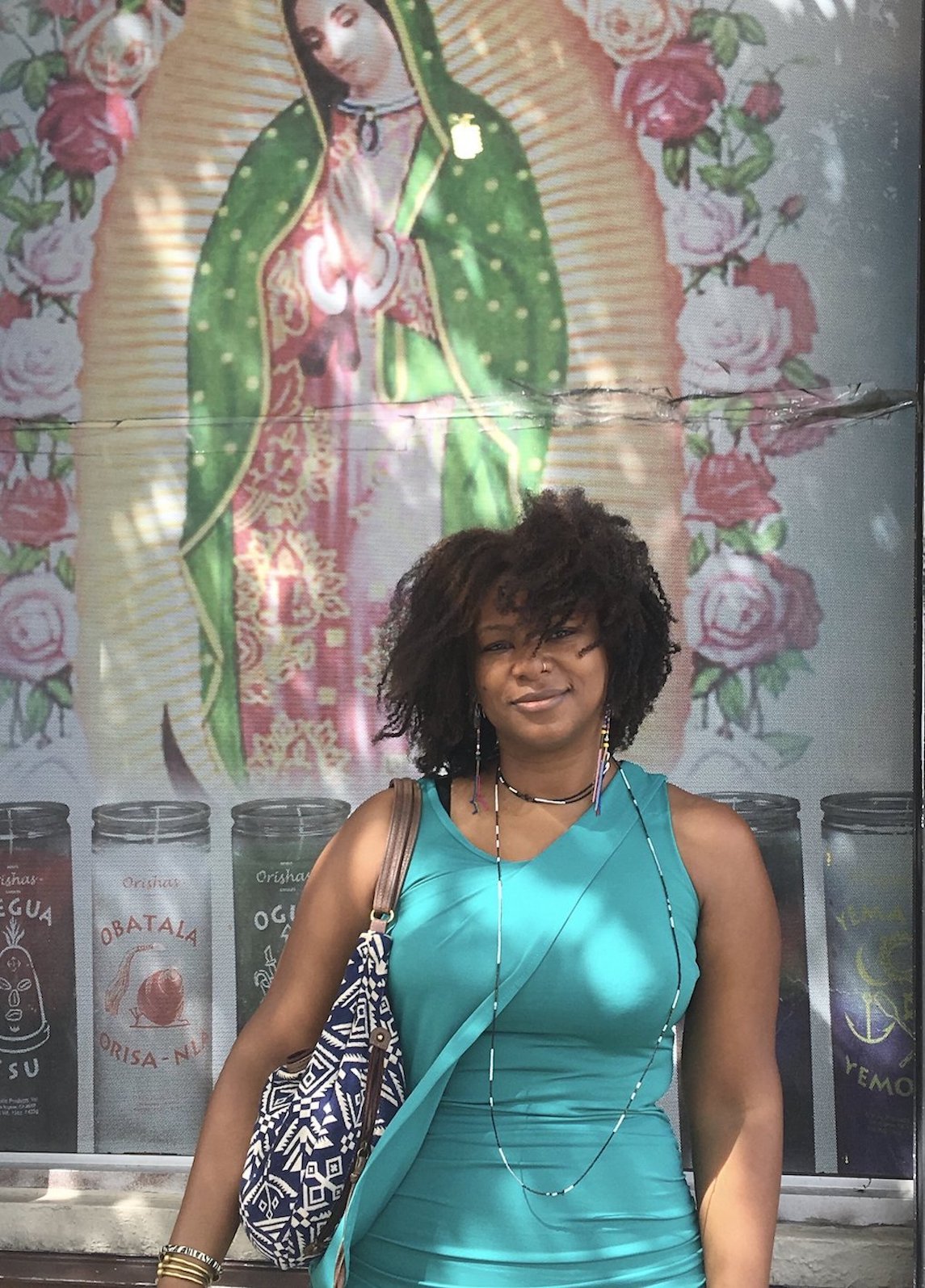
La artista nacida en San Juan y criada desde pequeña en Arlington Virginia, Amber Robles-Gordon, está presentando la primera exposición individual en línea, Place of Breath and Birth, en la Galería de Arte de la Universidad del Sagrado Corazón, en Santurce.
Su trabajo artístico representa un retrato de sus recuerdos de niña. Según nos cuenta en entrevista, este momento en la vida de la artista fue muy complejo, no solamente por encontrarse en un nuevo lugar a temprana edad, con una cultura e idioma totalmente diferente a la de San Juan, pero además por el discrimen que la recibió en aquel entonces. Esta exposición es dedicada a esa parte de su vida y su afán por recuperar su herencia.
Read MoreArtist Talk at IA&A at Hillyer
Artist/Exhibition Conversation: On Saturday May 20, 2023 at 2:00 pm join us for a conversation between Amber Robles-Gordon, a featured solo artist during the month of May, and George Hemphill, renowned gallerist in Washington DC. Robles-Gordon and Hemphill will be discussing the underpinnings of her current body of artwork, the connective threads to the Washington Color School, and an undiminished love and appreciation of the artwork of Alma Thomas.
This program is organized in conjunction with Robles-Gordon's exhibition Remnants: a visual journey of memory and renewal, which will be on view through Sunday, May 28, 2023. The event is free to the public. Advanced registrations are welcomed.
Read MoreSoy Luz, amor, y frecuencia.(I am light, love and frequency), 2023, mixed media, 80 (L) x 60 (H) in
IA&A AT HILLYER / International Arts and Artists at Hillyer / Amber Robles-Gordon / Remnants
In this series, Robles-Gordon explores the emotional, physical, and psychic processes of loss. This body of work conveys the mental and physical effort it takes to move through loss. The artist works sequentially and within these works, deploying the lenses of abstraction, realism, photography, sacred geometry, symbolism, and installation art to convey a journey of self-awareness and growth. Together, these artworks present a visual telling of love, loss, and healing.
Read MoreCREATING A NEW WHOLE
IA&A at Hillyer presents Pulse 2023, an exhibition that recognizes the role of Hillyer’s Advisory Committee in identifying artists for solo and group exhibitions at Hillyer’s renowned contemporary art space. The exhibition features work by some of Hillyer’s past notable members such as Helen Frederick, Renée Stout, and Tom Wolff, and current members, Joan Belmar, Nikki Brugnoli, Anna U Davis, Elsabe Dixon, Cianne Fragione, Pat Goslee, Laurel Lukaszewski, Cory Oberndorfer, John Paradiso, and Amber Robles-Gordon.
Read MorePulse 2023 @ IA&A At Hillyer
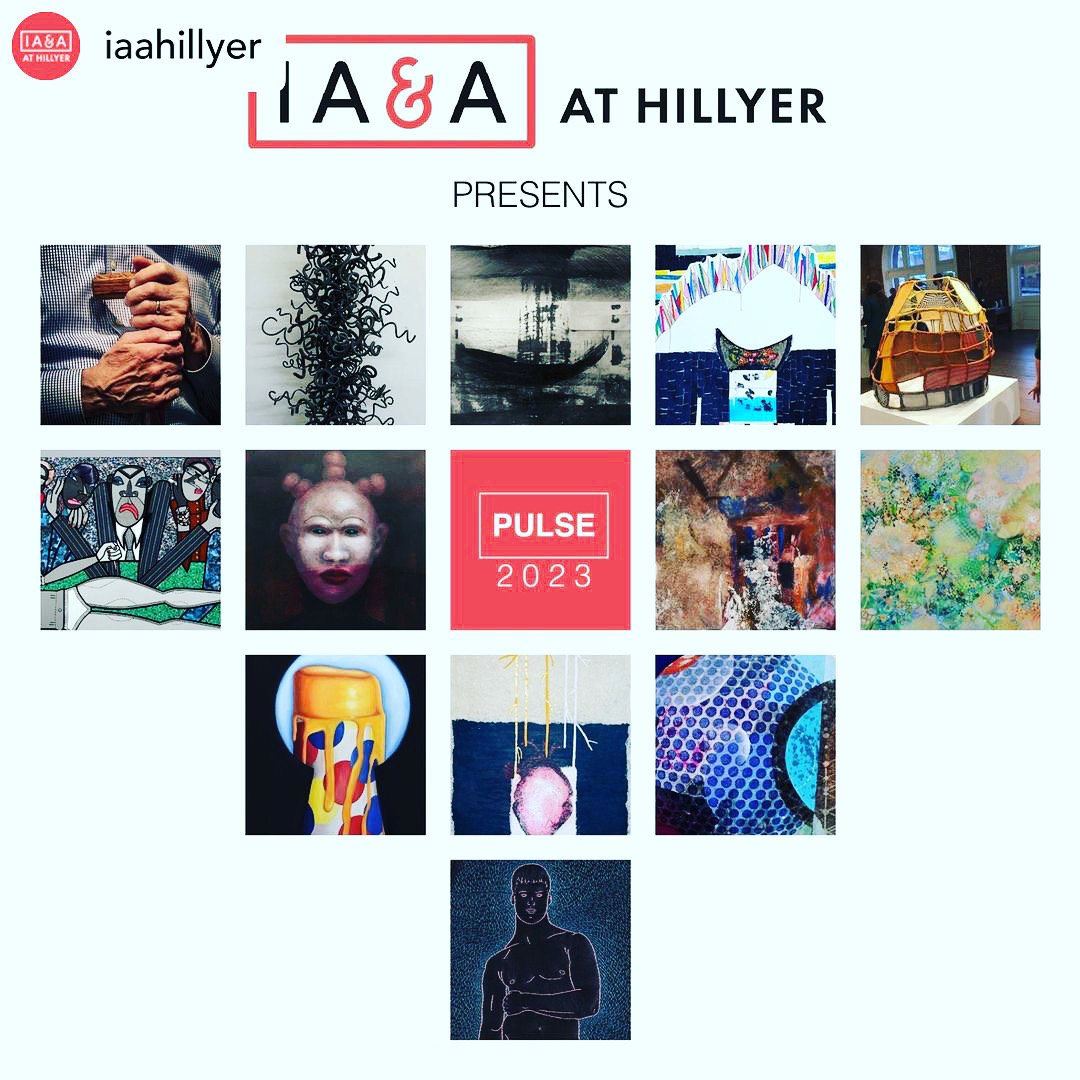
IA&A at Hillyer presents Pulse 2023, an exhibition that recognizes the role of Hillyer’s Advisory Committee in identifying artists for solo and group exhibitions at Hillyer’s renowned contemporary art space. The exhibition features work by some of Hillyer’s past notable members such as Helen Frederick, Renée Stout, and Tom Wolff, and current members, Joan Belmar, Nikki Brugnoli, Anna U Davis, Elsabe Dixon, Cianne Fragione, Pat Goslee, Laurel Lukaszewski, Cory Oberndorfer, John Paradiso, and Amber Robles-Gordon.
Read MoreAmber Robles-Gordon Featured / Art News / The Best Booths at Untitled’s 2022 Edition on Miami Beach
Building on two previous bodies of work, both created since the pandemic, With Every Fibre of My Being (2022) by Amber Robles-Gordon presents a visual summary of the ongoing research that the artist has conducted into her identities as an Afro-Latina of Puerto Rican heritage and as a U.S. citizen living in the District of Columbia…Art News, Tafeta Gallery, Untitled Art Fair
Read MorePhoto gallery: Images of the VIP opening for Prizm Art Fair in Miami
BY D.A. VARELA
UPDATED NOVEMBER 30, 2022 12:00 AM
Artist Marryam Moma strikes a pose with her art collage at the Art Prizm Fair. D.A. VARELA dvarela@miamiherald.com
Read more at: https://www.miamiherald.com/entertainment/visual-arts/art-basel/article269379152.html#storylink=cpy
Now in its 10th year, Prizm Art Fair on Flagler Street gives artists of African descent the opportunity to showcase their work. “The market doesn’t generally highlight and celebrate enough Black artists,” founder Mikhaile Solomon said. “This is a place where you can come to see all of the best artists who are emanating from Africa and its diaspora.” This year’s theme is “Vernacular À la Mode,” which Solomon deemed a way to honor all people of African descent. “We wanted to celebrate all the ways in which people of African descent exist in various parts of the world,” Solomon said.
Read more at: https://www.miamiherald.com/entertainment/visual-arts/art-basel/article269379152.html#storylink=cpy
Artist Amber Robles-Gordon strikes a pose in front of her artwork entitled ‘At The Altar: Dance of the Serpents’ at the Art Prizm Fair during Art Basel in the Design District neighborhood of Miami, Florida, on Tuesday, November 29, 2022 D.A. Varela dvarela@miamiherald.com
Artist Matthew McCarthy strikes a pose with his installation entitled ‘Serious Tings Ago Happen’ displayed at the Art Prizm Fair. McCarthy created the artwork with collaborator Maxine Walters. D.A. Varela dvarela@miamiherald.com
Read more at: https://www.miamiherald.com/entertainment/visual-arts/art-basel/article269379152.html#storylink=cpy
“Imagining a World Creates It”: Amber Robles-Gordon Interviewed by Jessica Lanay

“Imagining a World Creates It”: with Visual Artist Amber Robles-Gordon Interviewed by Jessica Lanay
Read MoreFEATURED
Crawl Space: July 2022
FEATURED
July’s First Saturday events will feature extended exhibitions worth a second look
JUN 30, 2022
Northern Mariana Islands, Political, Spiritual,
Tinney Contemporary will be sticking with its June show through July 9. I reviewed Amber Robles-Gordon’s Sovereignty exhibition for the Scene — it’s a prime example of how artists can incorporate political and social content into a body of work while also making art that’s formally striking. We’ve seen lots of messaging about social and political issues in the contemporary art of the 21st century. However, much of that work will never be remembered or reconsidered — timely art is rarely timeless. Robles-Gordon’s work is visually successful irrespective of its critiques of the U.S. policy toward — and governance of — its populated territories and the District of Columbia. I’ve seen powerful political art and dim political art, and I often question whether visual art is an effective medium for political messages. But the work in Sovereignty is formally distinctive. Tinney Contemporary will be open this Saturday from 2 to 8 p.m.
https://www.nashvillescene.com/arts_culture/visualart/crawl-space-july-2022/article_4d18f0c8-f6e7-11ec-a1b5-8f437edaf809.html
Instagram Live CONVERSATION TOMORROW 6/28 @ 2PM with Dr. Kellie Morgan and Amber Robles-Gordon
PLEASE JOIN US TOMORROW FOR A CONVERSATION WITH DR. KELLI MORGAN AND AMBER ROBLES-GORDON STREAMING ON INSTAGRAM LIVE.
-
THESE AMAZING AND ACCOMPLISHED THINKERS WILL BE ENGAGING IN A DISCUSSION ABOUT THE IMPRESSIVE VISUAL PRESENTATION AND CRITICAL INVESTIGATIONS PRESENT IN AMBER’S CURRENT EXHIBITION ON VIEW AT OUR GALLERY, SOVEREIGNTY: ACTS, FORMS, & MEASURES OF PROTEST & RESISTANCE
AMBER ROBLES-GORDON lives and works in Washington, D.C., and is a key advocate and participant in the arts community there. She is a member of the Delusions of Grandeur Artist Collective and Black Artists DC (BADC). Her artwork has been exhibited extensively nationally and internationally.
Most recently, her work has been featured in exhibitions at Galleria de Arte, Universidad del Sagrado Corazón, (Sacred Heart University), in her birthplace of San Juan, Puerto Rico, (PR), by Tafeta Gallery in 1-54 Contemporary African Art Fair in London, England, American University, Katzen Art Center, by the Royal Academy of Arts Sumer Exhibition in London, England, and more.
She has created numerous site-specific commissions, including a public installation with the D.C. Creates Public Arts Program. Her work has been extensively covered in publications such as The Washington Post, Hyperallergic, Art Daily, Puerto Rico Black Art Blog, Bmore Art, Culture Type, and more. She has been selected for various teaching residencies internationally, including the Centro Cultural Costarricense-Norteamericano, in Limon, Costa Rica, and Washington Projects for the Arts and DC Public Schools.
DR. KELLI MORGAN is a Professor of the Practice and the inaugural Director of Curatorial Studies at Tufts University. A curator, educator, and social justice activist who specializes in American art and visual culture, her scholarly commitment to the investigation of anti-blackness within those fields has demonstrated how traditional art history and museum practice work specifically to uphold white supremacy.
Besides her own curatorial experience, she mentors emerging curators and regularly trains staff at various museums to foster anti-racist approaches in collection building, exhibitions, community engagement, and fundraising. Over the past year, Dr. Morgan has become a leading and influential voice in bolstering anti-racist work in art museums. She has held curatorial positions at the Indianapolis Museum of Art at Newfields, the Birmingham Museum of Art, and the Pennsylvania Academy of the Fine Arts and teaching positions at Wayne State University, the University of Michigan, and the Tyler School of Art at Temple University
She earned her Ph.D. in Afro-American studies and a graduate certificate in public history–museum studies from the University of Massachusetts Amherst in 2017
“Guam Political,” Amber Robles-Gordon
Amber Robles-Gordon’s Polemic Quilts Balance Form and Content
SoveREIGNty: Acts, Forms, and Measures of Protest and Resistance is currently on view at Tinney Contemporary
By JOE NOLAN / JUN 15, 2022
Tracking art-world trends often means simply noting the shifting balance between form and content over time. Midcentury American painting was formalist, elemental art for art’s sake. It was interested in line, shape, space, form, tone, texture, pattern, color and composition. An important work of art was something, but nowadays an important work of art is oftenaboutsomething: politics, social causes, various identity expressions.
Midcentury art favored abstraction over figuration, but contemporary art is full of figures along with the narrative content they inevitably inspire. Luckily, no matter how the trends swing, we can always look back to the Greeks and remember that there is beauty in balance. And it’s not surprising that some of today’s best art manages to message and signal and narrate after first capturing the eye, drawing attention, and igniting the imagination of the viewer.
Even the title of Amber Robles-Gordon’s Tinney Contemporary exhibition — SoveREIGNty: Acts, Forms, and Measures of Protest and Resistance — expresses an activist message. And it’s emblematic of a display of large-scale, mixed-media quilts brimming with signals and symbolism interrogating U.S. policy toward — and governance of — its populated territories and the District of Columbia…
Amber Robles-Gordon’s Polemic Quilts Balance Form and Content
Even the title of Amber Robles-Gordon’s Tinney Contemporary exhibition — SoveREIGNty: Acts, Forms, and Measures of Protest and Resistance — expresses an activist message. And it’s emblematic of a display of large-scale, mixed-media quilts brimming with signals and symbolism interrogating U.S. policy toward — and governance of — its populated territories and the District of Columbia.
Read MoreTinney Contemporary Presents
This exhibition features Amber Robles-Gordon’s large-scale, mixed-media quilts–assemblages incorporating paint, textiles and hand-stitching–in an interrogation of U.S. policy towards–and governance of–its populated territories and the District of Columbia.
Read MoreDerek Eller Gallery Presents a Solo Exhibition of Mixed-Media Works by Amber Robles-Gordon
Derek Eller Gallery is pleased to present a solo exhibition of mixed media works on canvas by Amber Robles-Gordon. With an array of materials including acrylic paint, fabric, beads, magazine images, photographs, and ink drawings, Robles-Gordon assembles patchwork compositions which interweave her personal narrative within the fraught political, socioeconomic, and environmental threads that define the colonialist relationship between the United States and Puerto Rico.
Read MoreAmber Robles-Gordon’s anti-colonial quilts and personal histories at American University Museum at the Katzen Center
“y mi bandera vuela mas alto que la tuya,” 2020. Mixed media collage on canvas, 18 x 24 in. Courtesy of the artist.
By Andrea KirshDecember 17, 2021
An artist’s visit to her mother’s birth place in Puerto Rico awakens her to the complexities of immigration and family – and to the dubious socio-political actions and inactions, by the U.S. government in its far-flung territories. Our reviewer Andrea Kirsh is moved by the powerful collage works and double-sided quilts of Amber Robles-Gordon. The show closed Dec. 12.
Amber Robles-Gordon‘s first grade classmates in Arlington, VA bullied her for speaking Spanish, so she learned to speak to her mother in English. It wouldn’t be until middle age that the artist finally visited her mother’s birthplace in Puerto Rico. Successions: Traversing U.S. Colonialism, her solo exhibition at the the American University Museum at the Katzen Center (August 28 – Dec. 12, 2021) in Washington, D.C. was the product of that initial trip and a her return for a six-week residence on the island in 2020.
The exhibition presented two bodies of work. The first, “Place of Breath and Birth” is a series of ten vibrant collages on canvas, all 18 x 24 inches; two, represented by full-scale pigment prints. The collages are constructed from masses of tiny images cut from paper; even the bands of color that form their backgrounds are assembled from minute, colored fragments. And there is a very personal rhythm – like distinctive brushwork – in the way Robles-Gordon arranges the fragments.
Another personal language of Robles-Gordon’s appearing in the fragments is inspired by multiple, non-Western cultural traditions and imagery taken from magazines and photographs. These fragments are used as structuring and framing elements, incorporating the artist’s drawings of detailed and decorative, spiky, geometric patterns. An occasional small trinket or charm adds surface texture, as does the profusion of tiny, sparkly beads which outline the central, circular forms on each collage. The beads and high-keyed colors capture the intense sunlight of the Caribbean and lend a festival-like quality to the series.
Robles-Gordon culls her imagery from photographs she took in Puerto Rico or found elsewhere that evoke its lush, intensely-polychromed environment – both natural and human. While on the island, she was fascinated by the rubber trees and palms, the coconuts and mangos, street murals and public art. The titles of individual collages suggest the range of topics that were prompted by her visits: “Observation of Influencers: Taino culture and heritage, the climate and machismo,” “For bioluminescent bays and turtles.”
Her long-time interest in spirituality and syncretic, New World religious practices inspire aspects of the collages’ format, which the artist likens to personal altars. The imagery of fruit and floral offerings, flickering candles and the crystalline forms of her drawing run throughout the series and reinforce their spiritual associations. She includes photos of herself – both earlier and contemporary images – in several collages, and there is no question that the series itself is a diary of self-discovery.
“Reflexiones sobre el yo, la virgen maría y el colonialismo,” 2020. Mixed media, collage on canvas, 18 x 24 in. Courtesy of the artist.
Quilts of pointed anti-colonial critique
If the collages capture Robles-Gordon’s connection to her ancestral culture in the form of personal, spiritual reflection, the second part of the exhibition responded to her developing political understanding of Puerto Rico’s position as a U.S. Territory. The works are a public forum in which to teach, to encourage discussion, to heal, and to begin building a congregation of territorial residents. Six, large, double sided, appliqued quilts hung throughout the high-ceilinged gallery. The installation, which gave its name to the exhibition, was titled “Successions; Traversing U.S. Colonialism.” The quilts include dense references to histories that have yet to be acknowledged and the dark underside of U.S. power. Their format entangles the conventionalized emblems of history and patriotism with the domestic craft of quilting, the masculine pursuit of territory and power with a feminine tradition of healing.
On one side of each quilt Robles-Gordon addresses political history, with references to each of the U.S. Territory’s flag or seal, as well as to the exploitation of its indigenous people for medical experimentation, military support and economic interests; on the other side she constructs an altar dedicated to healing the damage of historical exploitation and the racism which underpins it. Both sides bear central medallions; they are greatly enlarged versions of the circles in the collages, and make references to the circle as a foundational religious image and form of celebration – to healing circles and ceremonial dancing. The healing altars are constructed with the same spiky, geometric patterning that Robles-Gordon used in the collages, and all have hieratic, symmetrical designs. Here they suggest abstracted figures of deities, and their patterning makes reference to a variety of Afro-diasporic and non-Western decorative histories seen in painting, textiles and ceramics. Although painted, they appear to be drawings in chalk on black backgrounds, which suggests religious images in various cultures which are intended to be temporary.
The timing of Robles-Gordon’s residency in Puerto Rico reinforced her understanding of the disparity between U.S. government support to the island after the overwhelming damage from Hurricanes Maria and Irma in 2017, and the level of disaster relief Americans have come to expect on the mainland. This understanding, in turn, led to her interest in the U.S. Territories as a group; areas under United States dominion with the highest percentage of poverty, where the government has exploited resources and sited strategic military bases, with little concern for the inhabitants – all people of color, who are largely, only nominally U.S. Citizens. The territories function, rather, as U.S. colonies.
Puerto Rico, Guam, American Samoa, the Virgin Islands, and the Northern Mariana Islands are unfamiliar to many on the mainland United States. Few Americans know that their residents are U.S. Citizens with the right to vote – although they lack full representation in Congress. Robles-Gordon included Washington, D.C., her current home, among the territories because it’s residents, too, fall under U.S. jurisdiction but have no fully-empowered Congressional representative.
Robles-Gordon used her childhood bullying as a spur to understanding her own cultural traditions, and it is characteristic of her long-developed career of teaching and producing art that she didn’t respond to the history of territorial exploitation with rage, but with honesty, offering understanding, teaching and healing as a foundation on which to advocate for social justice in the outlying regions of the United States and in powerless communities internationally. The sense of spirituality and turning towards a better future pervades her work as much as her personally-developed language of forms and patterns, use of repurposed materials, passionate polychrome, and fusion of visual traditions.
Amber Robles-Gordon, “Successions: Traversing U.S. Colonialism” is now closed. It was on view at the American University Museum at the Katzen Center in Washington, D.C., August 28–December 12, 2021.
“The eternal altar for the women forsaken and souls relinquished. Yet the choice must always remain hers/ El altar eterno de las mujeres abandonadas y las almas renunciadas. Sin embargo, la elección siempre debe ser de ella.,” 2020. Mixed media collage on canvas, 18 x 24 in. Courtesy of the artist.
